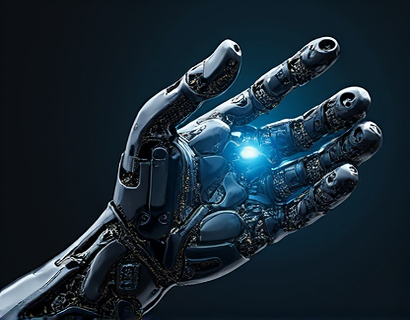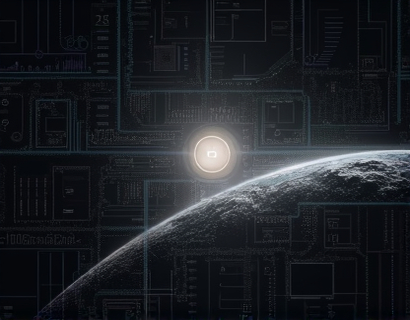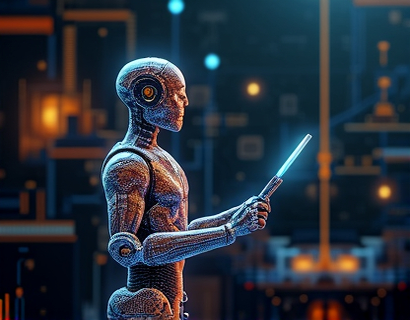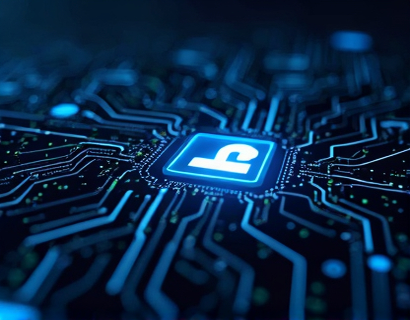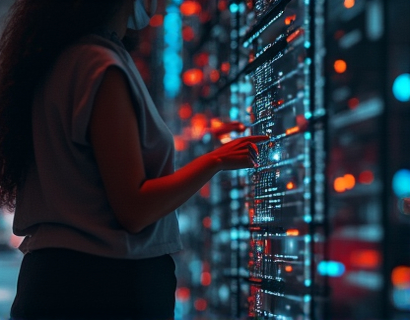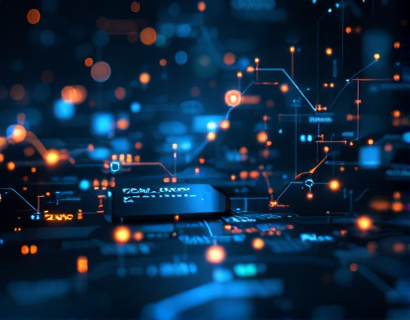Accelerating Digital Transformation: The Synergy of Crypto and AI
The digital landscape is undergoing a profound transformation, driven by the convergence of blockchain technology and artificial intelligence. This synergy is not just a trend but a fundamental shift in how we interact with digital services and applications. For tech innovators and early adopters, understanding the potential of this convergence is crucial for staying ahead in a rapidly evolving market. This article delves into the transformative power of combining blockchain and AI to revolutionize app and service interactions, driving unprecedented growth and engagement.
The integration of blockchain and AI creates a robust ecosystem that enhances connectivity and elevates online presence. Blockchain provides a secure, decentralized, and transparent framework, while AI brings intelligence, automation, and personalized experiences. Together, they form a powerful toolkit for building innovative solutions that can redefine industries and reimagine user experiences.
Enhancing Security and Trust
One of the most significant advantages of combining blockchain and AI is the enhancement of security and trust in digital transactions. Blockchain's immutable ledger ensures that data once recorded cannot be altered, providing a high level of security against fraud and tampering. AI, with its advanced analytics and machine learning capabilities, can detect and prevent anomalies in real-time, further fortifying the security of the ecosystem.
For instance, AI-driven algorithms can monitor blockchain transactions for unusual patterns that may indicate a security breach. By integrating these systems, organizations can create a multi-layered security approach that not only protects sensitive data but also builds trust among users. This trust is essential for the widespread adoption of digital solutions, especially in sectors like finance, healthcare, and supply chain management.
Optimizing Efficiency and Automation
AI and blockchain together can significantly optimize efficiency and automation in various processes. Smart contracts on the blockchain can be programmed to execute automatically when predefined conditions are met, reducing the need for intermediaries and manual interventions. AI can enhance this process by predicting and optimizing the execution of these contracts based on real-time data and market conditions.
In the context of supply chain management, for example, AI can analyze vast amounts of data to predict demand and optimize inventory levels. Smart contracts can then automate the procurement and delivery processes, ensuring that everything runs smoothly and efficiently. This combination not only reduces costs but also speeds up operations, giving businesses a competitive edge.
Personalized User Experiences
AI's strength lies in its ability to provide personalized experiences tailored to individual user preferences and behaviors. When combined with blockchain, this personalization can be taken to new heights. Blockchain ensures that user data is securely stored and managed, giving users greater control over their information. AI can then use this data to create highly personalized recommendations, content, and services.
For instance, in the entertainment industry, a blockchain-based platform can store user viewing history and preferences securely. AI algorithms can analyze this data to suggest personalized content, enhancing user engagement and satisfaction. This level of personalization not only improves user experience but also increases user retention and loyalty.
Decentralized Applications and Services
The convergence of blockchain and AI is paving the way for decentralized applications (dApps) and services that offer new levels of autonomy and control to users. Unlike traditional centralized applications, dApps run on decentralized networks, ensuring that no single entity has control over the entire system. AI can enhance these dApps by providing intelligent functionalities and predictive analytics.
For example, a decentralized finance (DeFi) platform can use AI to offer smart investment strategies based on market trends and user behavior. Users can benefit from automated trading and risk management tools, all while maintaining control over their funds. This decentralized approach not only democratizes access to financial services but also fosters innovation and inclusivity.
Data Privacy and Ownership
Data privacy and ownership are critical concerns in the digital age, and the combination of blockchain and AI offers robust solutions. Blockchain's decentralized nature ensures that data is not stored in a single location, reducing the risk of large-scale data breaches. AI can further enhance data privacy by implementing advanced encryption techniques and ensuring that data is used only for intended purposes.
Users can have greater control over their data, deciding who can access it and for what purposes. AI can help manage and enforce these preferences, ensuring compliance with data protection regulations. This approach not only protects user privacy but also builds trust in digital platforms, encouraging more users to adopt and engage with these services.
Challenges and Considerations
While the potential of combining blockchain and AI is immense, there are several challenges and considerations that need to be addressed. One of the primary challenges is the technical complexity involved in integrating these technologies. Developers must have a deep understanding of both blockchain and AI to create seamless and efficient solutions.
Another challenge is the regulatory landscape. As these technologies are still relatively new, regulations are evolving and can vary significantly across different regions. Organizations must navigate these regulations carefully to ensure compliance and avoid legal issues. Additionally, the energy consumption associated with blockchain, particularly proof-of-work systems, is a concern that needs to be addressed to make these solutions more sustainable.
Roadmap to Digital Success
For tech innovators and early adopters looking to leverage the power of blockchain and AI, here is a roadmap to digital success:
- Research and Understand: Gain a comprehensive understanding of both blockchain and AI technologies, their applications, and their potential synergies.
- Identify Use Cases: Identify specific areas within your business or industry where the combination of blockchain and AI can add value. This could range from enhancing security and efficiency to providing personalized user experiences.
- Build a Skilled Team: Assemble a team with expertise in both blockchain and AI. Collaboration with experts in these fields can accelerate development and ensure high-quality solutions.
- Prototype and Test: Start with small-scale prototypes to test the feasibility and effectiveness of your solutions. Gather feedback and iterate based on real-world usage.
- Ensure Compliance: Stay informed about regulatory requirements and ensure that your solutions comply with relevant laws and standards.
- Scale and Innovate: Once proven, scale your solutions and continue to innovate by exploring new applications and integrating additional technologies.
By following this roadmap, organizations can navigate the complexities of integrating blockchain and AI, unlocking new opportunities for growth and engagement in the digital landscape.
Conclusion
The convergence of blockchain and AI represents a revolutionary force in the digital transformation journey. By enhancing security, optimizing efficiency, personalizing user experiences, and enabling decentralized services, these technologies offer unprecedented opportunities for innovation and growth. For tech innovators and early adopters, embracing this synergy is not just an option but a necessity to stay competitive and relevant in the rapidly evolving tech landscape. As we continue to explore and harness the potential of blockchain and AI, the future of digital transformation looks brighter and more promising than ever.




